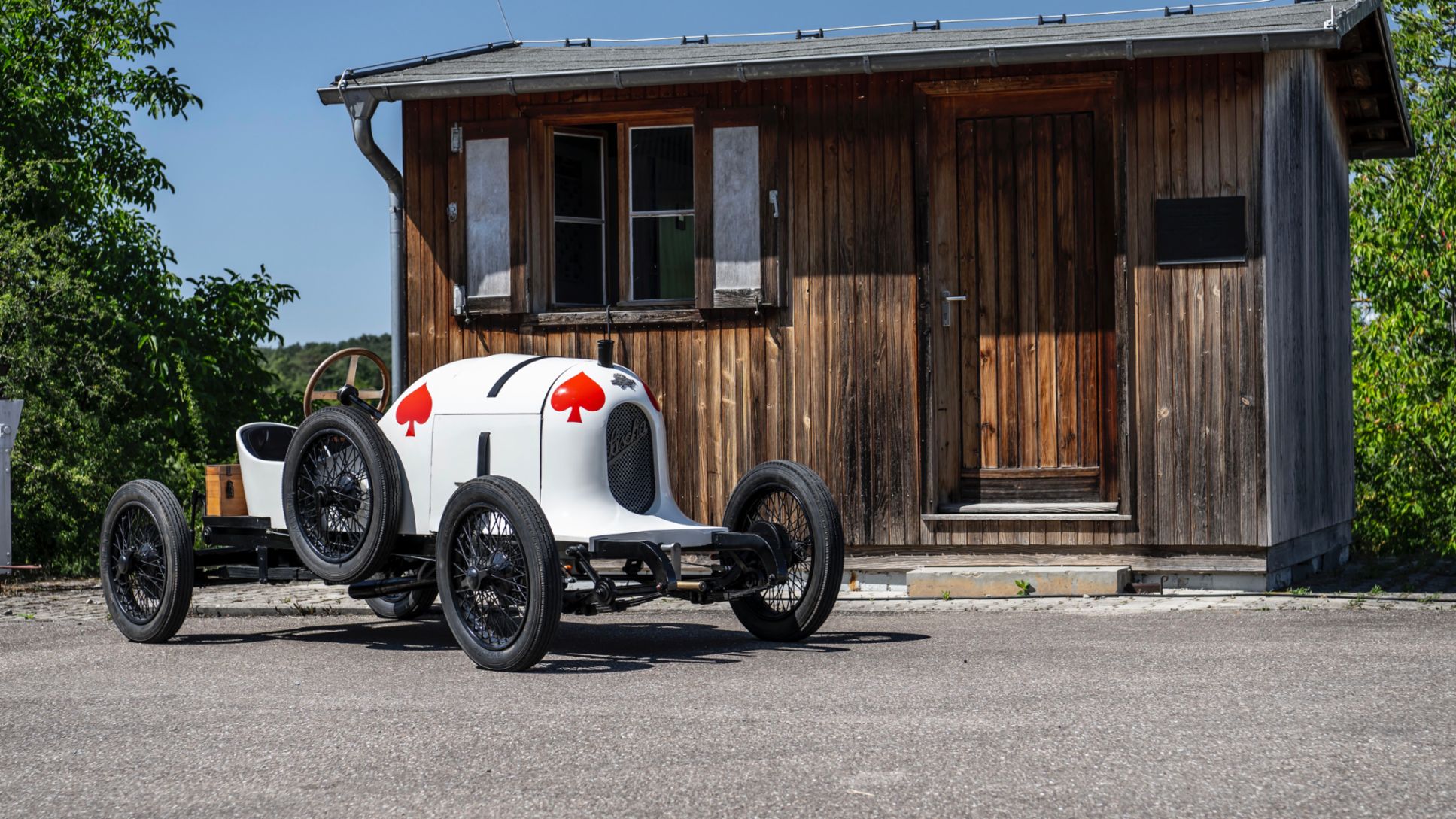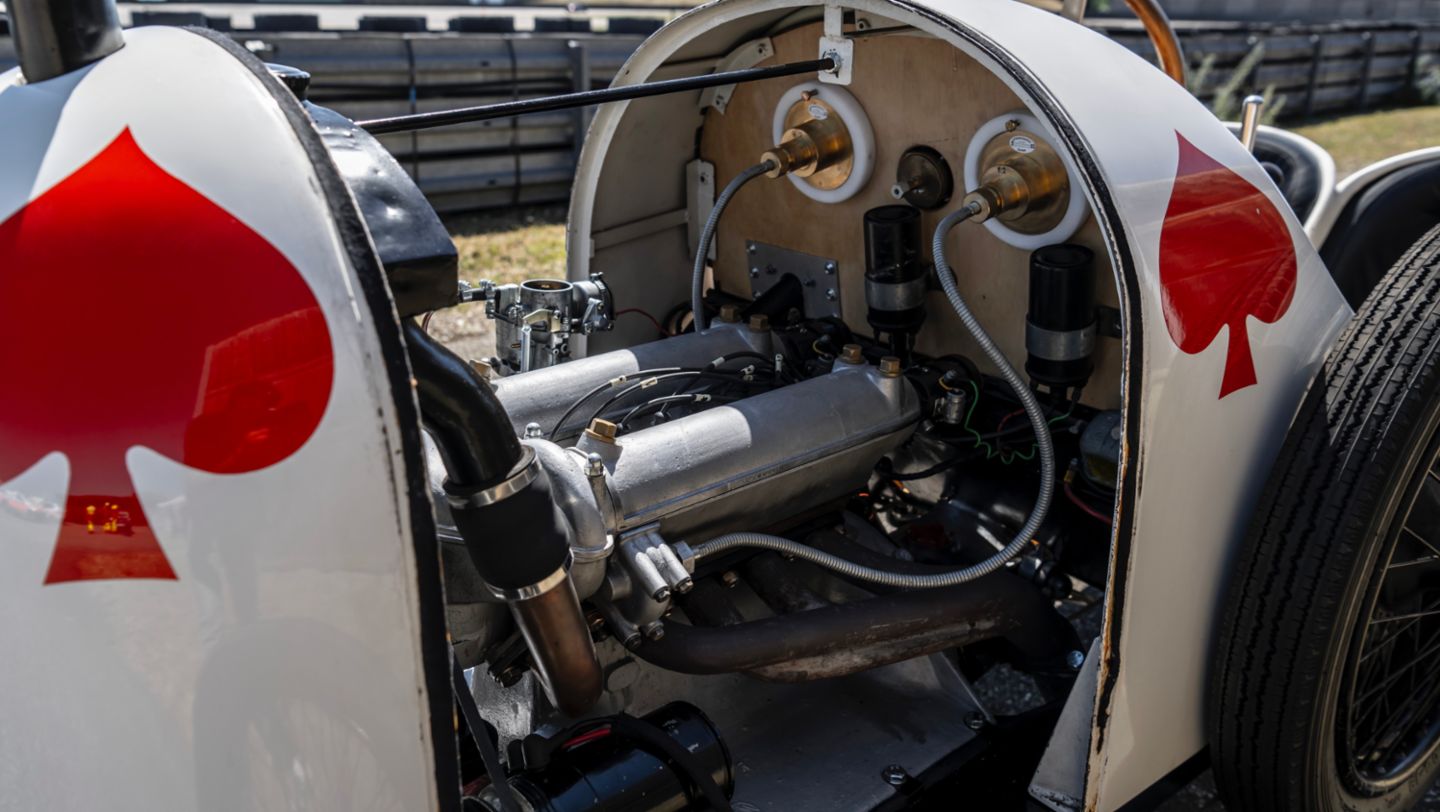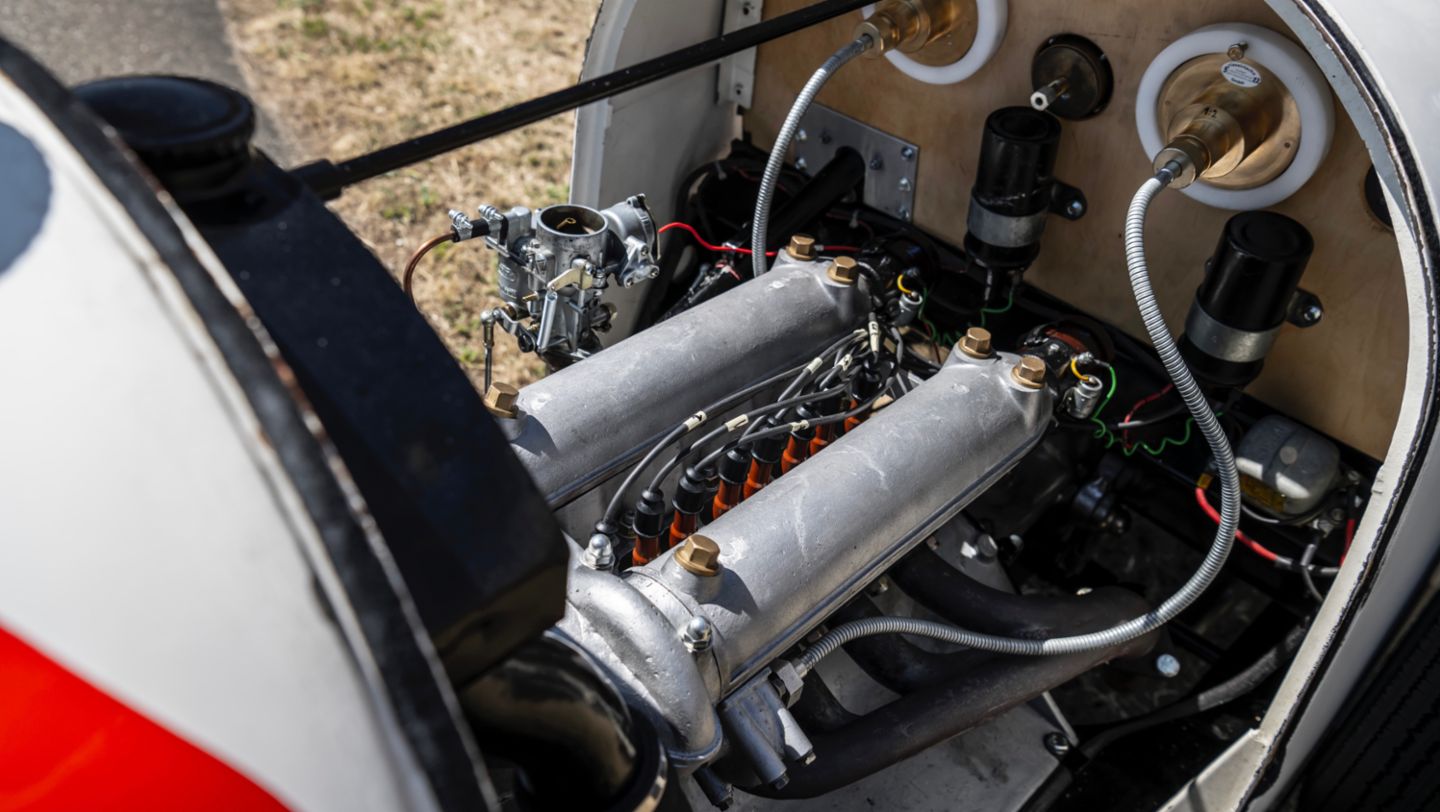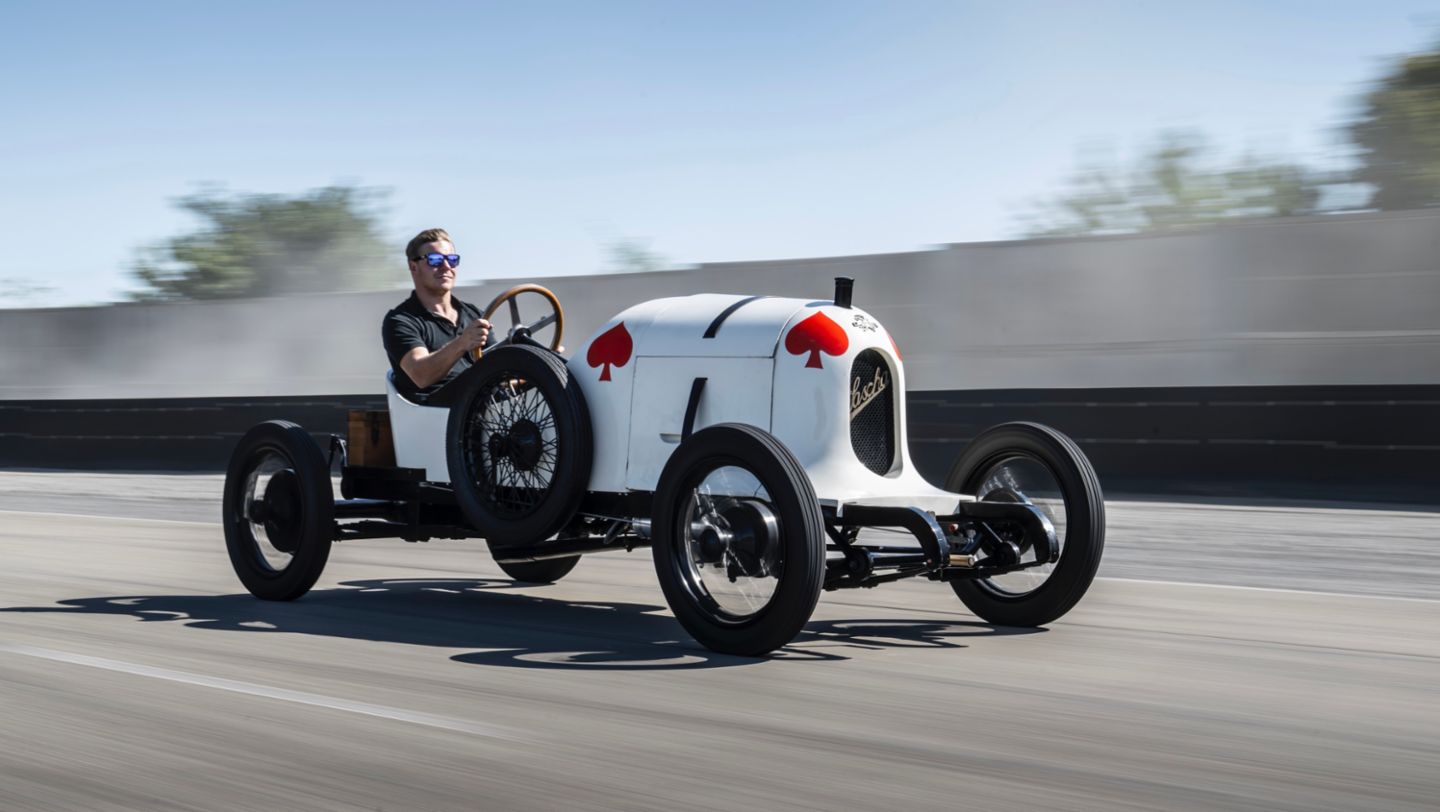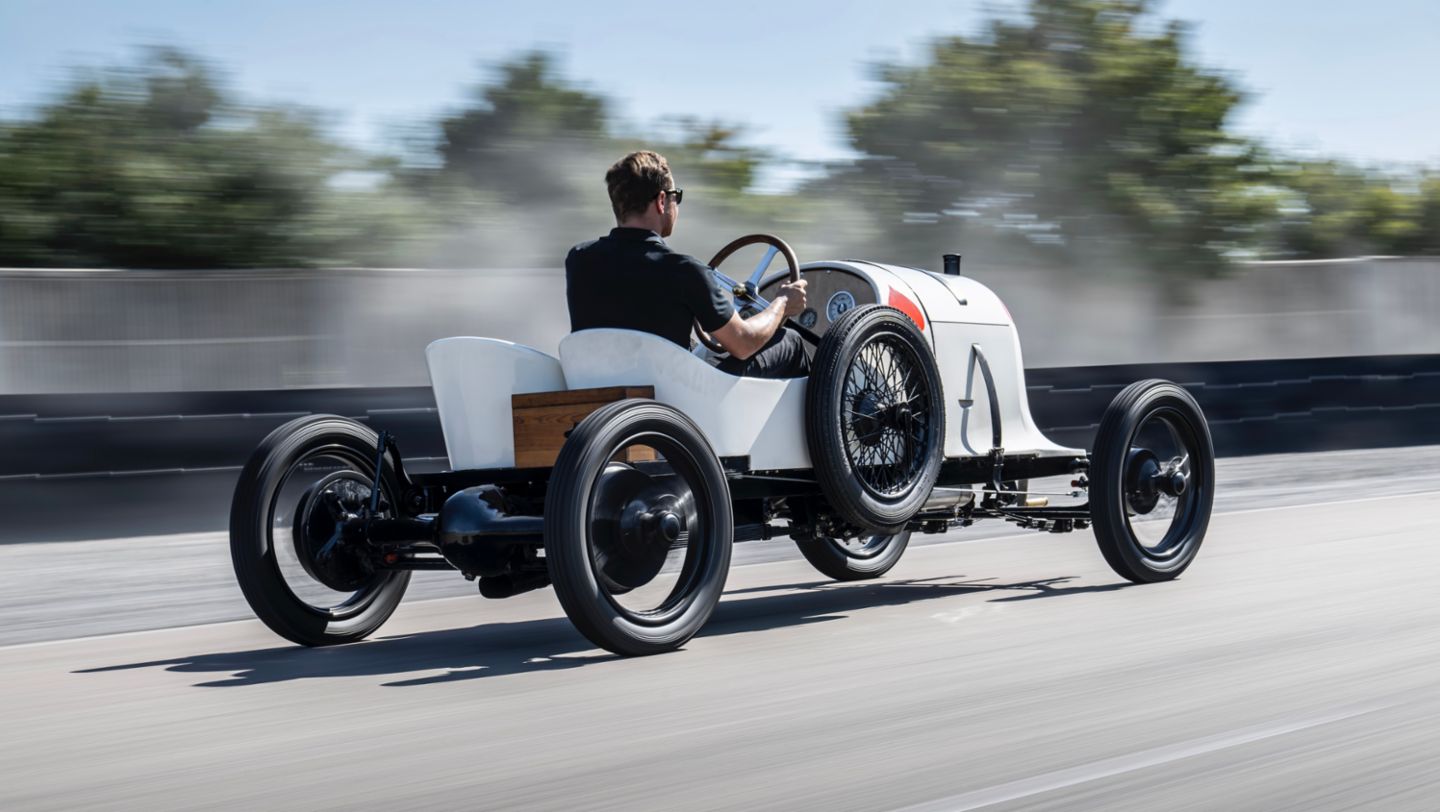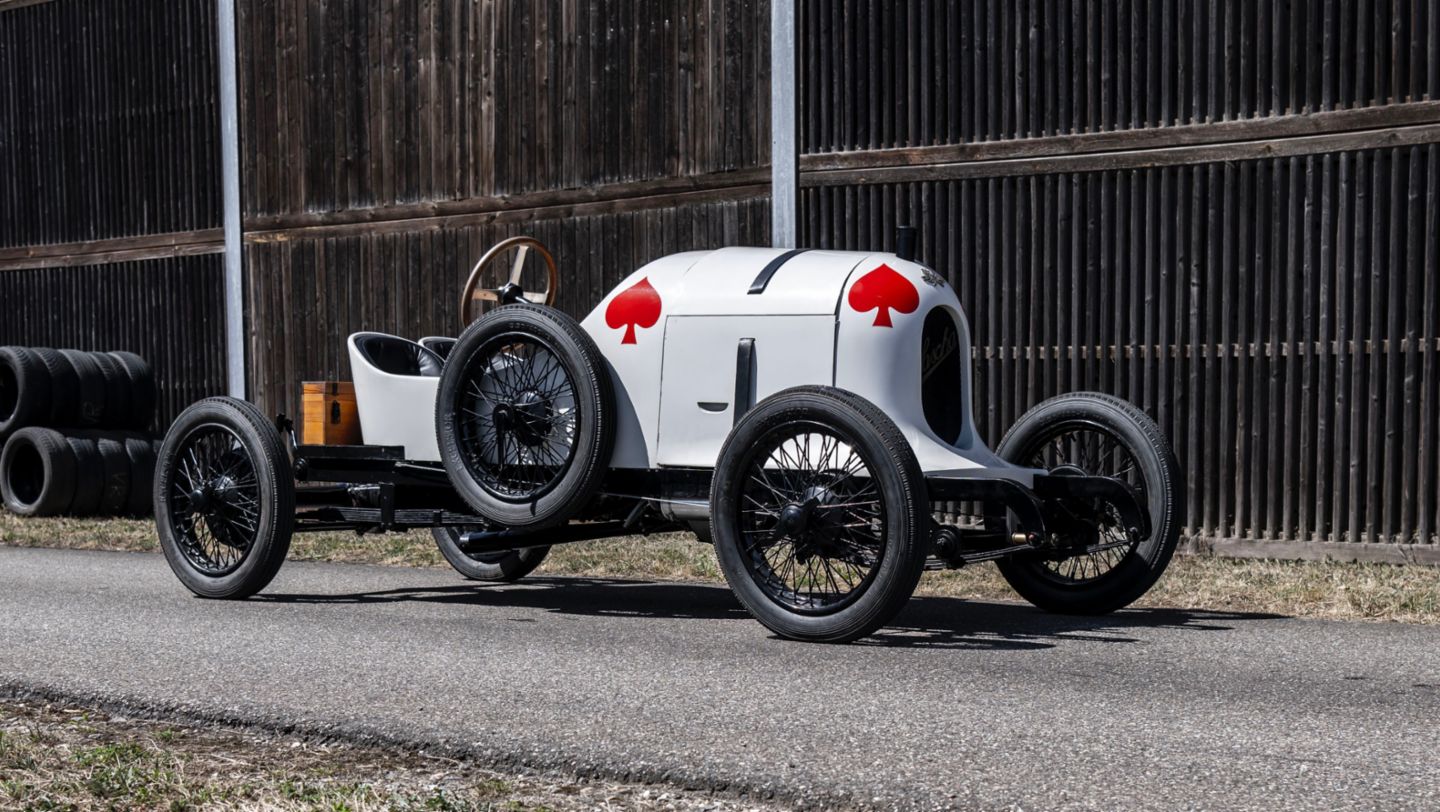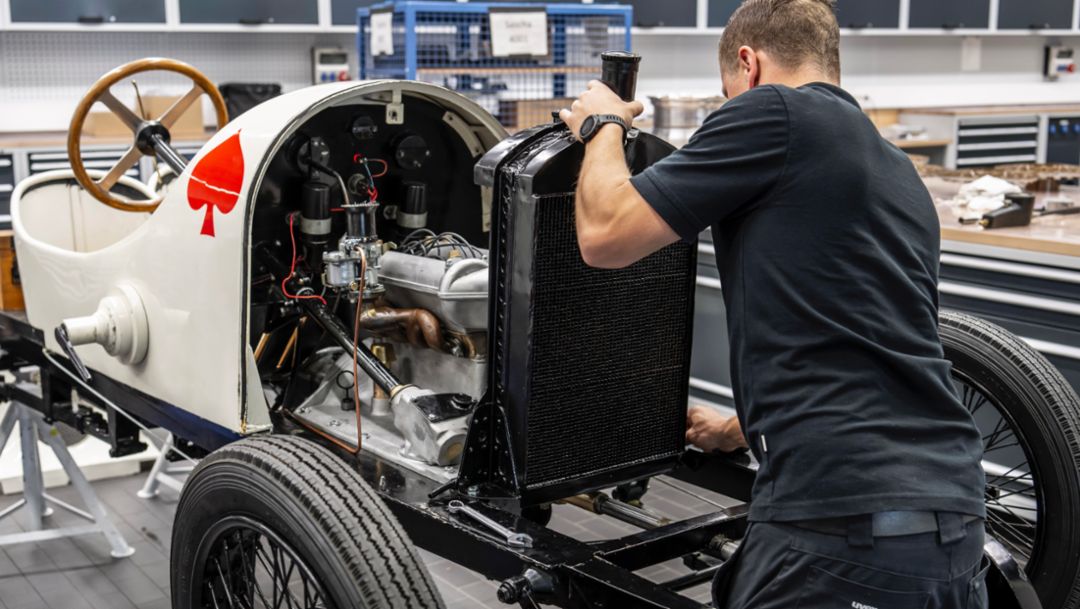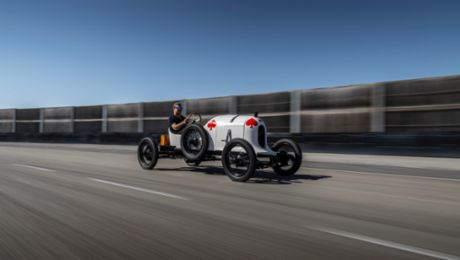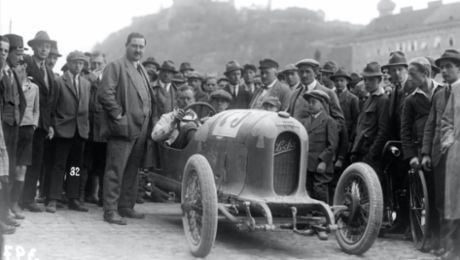Sascha was ahead of its time when it was developed more than a hundred years ago. For example, the driver actuated the four drum brakes mechanically by means of cable pulls, which, of course, were replaced with new cables during the restoration. Central nuts kept the wheels on, and the gearshift for the four-speed gearbox was inside the vehicle – both innovative for the 1920s. The engine had steel cylinder liners, light-alloy pistons and even a dry-sump lubrication system. It also featured dual ignition – a technical innovation adopted from racing, probably for reasons of safety. There were two spark plugs per cylinder.
If one spark plug failed, the engine could still run on all cylinders. Compared to other racing engines of the time, Porsche’s four-cylinder engine with a larger bore and shorter stroke proved to be the most advanced concept hands down. The exhaust manifold was funnel-shaped and well-thought-out: the exhaust ports of the middle cylinders converged in a shared manifold, as did the two outer ones. Further down, the two merged in a single pipe and accelerated the exit velocity of the exhaust gases.
At the rollout, after more than six months of work, Jan Heidak, who was responsible for the restoration of the oldest vehicle in the Porsche Museum, was finally allowed behind the large wooden steering wheel. “It’s amazingly good for a hundred-year-old car,” he said after his first drive in the pre-war vehicle on the skid pad at the Development Centre in Weissach. However, the arrangement of the pedals, which is not the same as it is nowadays, took some getting used to. The middle pedal is for accelerating rather than braking. Moreover, he said, the steering forces are high and the steering has no self-centering – to his mind the greatest difference to new vehicles today. “The shift is very good; it works without double declutching up and down, although it feels better if you do. It’s like a Porsche 356,” Heidak concludes. He does not recommend driving without goggles, however: “The front wheels kick up a lot of dirt, which flies right up in your face along with little stones.”
Kuno Werner reveals the Porsche Museum’s plans for the Sascha: “Interested parties will find it ready to drive at many events.” There’s certainly no shortage of opportunities in the Porsche Heritage and Museum department calendar.
